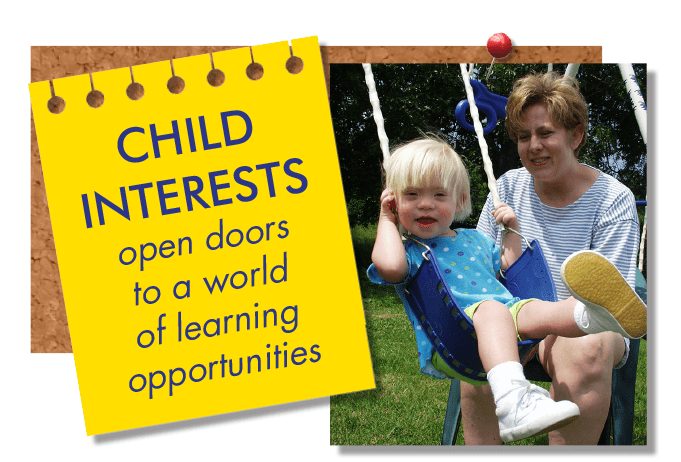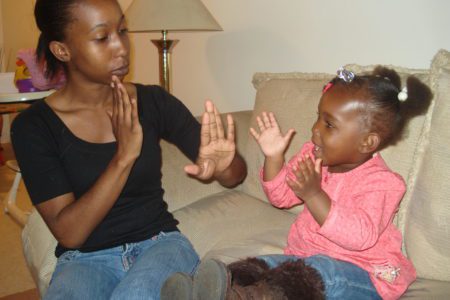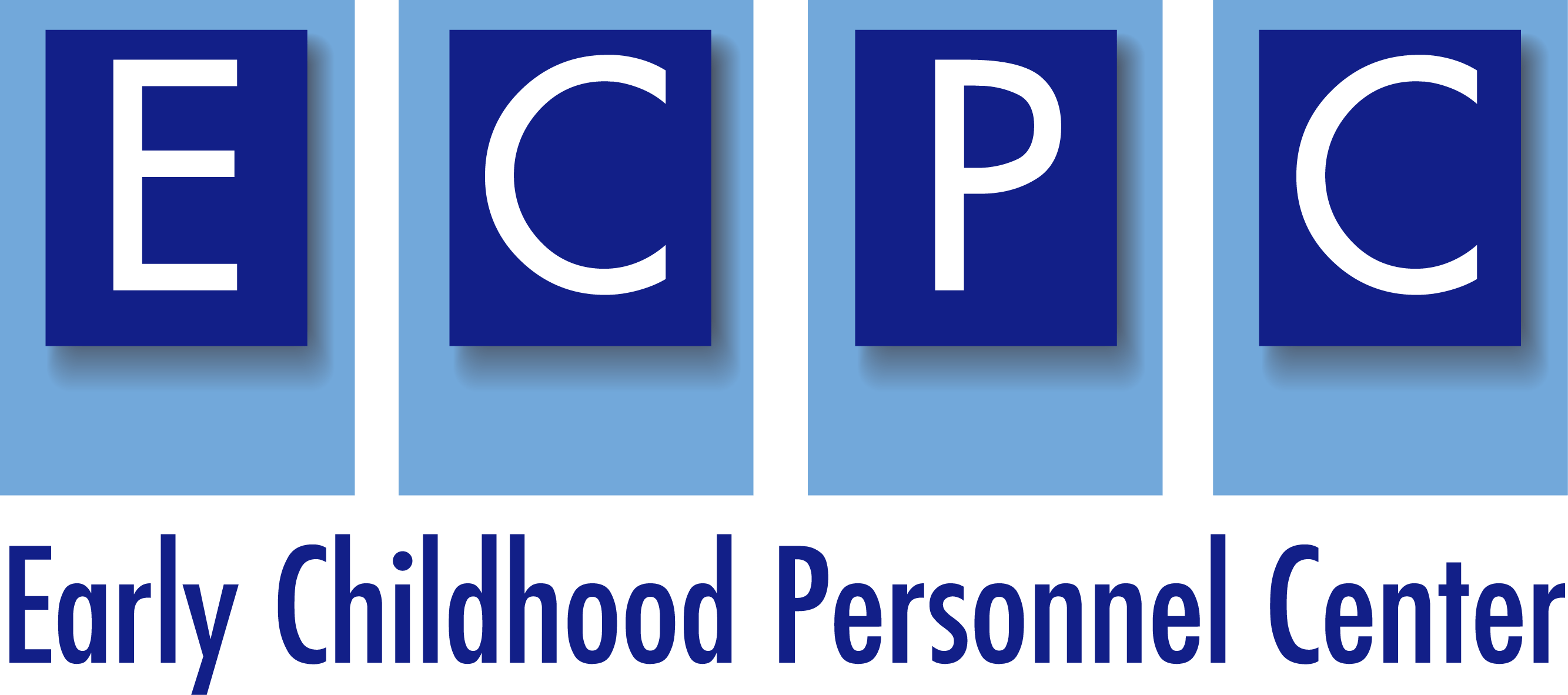
Definition
Interest-based child learning opportunities include activities where child preferences, things a child likes to do, and things that make a child smile and laugh are the building blocks for learning new skills and abilities. Interest-based child learning includes experiences that:
- Capture and hold a child’s attention
- Maintain a child’s engagement with people and materials
- Provide a child opportunities to practice existing abilities and learn new skills
- Facilitate a child’s recognition that he or she is the agent of environmental effects and consequences
Need2Know
Research on child learning shows that interest-based child learning is considerably more effective when compared to noninterest-based child learning. Research also indicates that interest-based child-directed learning maintains child engagement with people and materials for longer periods of time when compared to adult-directed child learning activities.
Child Engagement
- Children spend more time engaged in activities that match their interests
- Children more frequently initiate interactions with people and materials

Characteristics
The key characteristics of interest-based child learning include:
- Identifying a child’s interest in different settings and in interactions with different people and materials
- Engaging a child in everyday activities that provide opportunities for interest-based learning
- Paying particular attention to those activities that a child especially enjoys, likes to do, and chooses to do
- Providing a child as many learning opportunities as possible to engage in activities that encourage interest expression
- Responding promptly and positively to child interest-based skills and abilities to reinforce child competence
- Letting a child savor his or her success and accomplishments as a result of interest-based child learning
Child Outcomes
Interest-based child learning opportunities are effective for promoting children’s acquisition of:
- Social interaction behavior and skills,
- Communication and language skills,
- Play behavior with people and toys,
- Fine and gross motor abilities, and
- Many other functional (activity-specific) behavior and skills.
Take a Look
Swing into Learning
Bethie is a bubbly 2-year-old, who beams with non-stop smiles whenever she’s playing on the new swing set Grandpa sent as a birthday gift. Throughout the day, she brings her shoes to her mom or pats the kitchen door as signals that she wants to go outside. Without fail, she runs, babbling happily, straight for the sturdy structure comprising sling swings, a two-seat bench swing, a ladder and slide, and a seesaw. “She’d happily eat supper and spend the night out there!” her mom tells Grandpa. While Bethie stays engaged in enjoying the swinging, swaying, and whooshing movements for long periods of time, Mom helps her try out new ways of interacting with the equipment―balancing, climbing, pushing, hanging, and more―all while describing what Bethie is doing. The rhythmic activity also is proving to be the perfect time for beginning to learn nursery rhymes, singing songs, and starting to join in as Mom counts Bethie’s “backs and forths” aloud.
Bugs and More!
While walking to the playground with his teen-age sister, Annie, 3-year-old Martin spots a trio of bright butterflies darting among the branches of a flowering bush. Stopping in the middle of the sidewalk, eyes wide, he breathes, “Woook!” “You see pretty butterflies,” answers Annie. “Let’s watch!” Martin happily settles himself on the grass, never taking his eyes from the winged creatures. Annie describes what the butterflies look like and what they’re doing.
After a few minutes, Martin asks, “Bugs?” “You’re right!” Annie replies. “Butterflies are tiny animals we call bugs or insects. There are so many different kinds of bugs.” “MORE BUGS!” exclaims Martin, and the two spend the rest of the afternoon finding a horsefly, a long line of tiny black ants, and a yellow jacket trapped in a spider’s web. Bugs are now Martin’s very favorite thing. He sees every outing as an opportunity to find new tiny friends and learn their names, every visit to the library a chance to borrow new “bug books”. Annie helps him create simple costumes and cardboard wings to wear when he pretends to be his favorite bugs flying, crawling, eating, and building new homes.
The Sound of Learning
Preschool teacher Tess says her current class is the most musically inclined group she has ever met. The signs are clear. The music-making and -listening corner in the classroom is rarely empty; weekly sessions with the district music specialist always draw rapt attention and joyful participation; and singing games are the first requests for every group play time.
Such a clear shared interest has opened the way for the children to engage in all sorts of activities filled with learning opportunities. One corner of the room now houses a music workshop where children use their imaginations, odds and ends, and simple tools to invent all sorts of instruments they happily pound, strike, shake, pluck, and blow along to recorded music. In small groups they often compose simple songs to describe special class happenings. Tess invites parents who play instruments or who enjoy a particular kind of music to take turns visiting the class and sharing their specialties. The children often ask to perform their latest works from a little “stage” they created on the playground with a sheet of plywood and sturdy building blocks.
You'll want to try this:
You can try some of the following activities to improve your understanding and use of interest-based child learning activities:
- Download and use the Interest-Based Child Learning Checklist to guide and monitor any and all opportunities you have to observe or use this practice.
- Observe an experienced teacher using an interest-based approach with a child or group of children, then have a conversation about the ways children’s interests informed his or her practice. Some of the questions you might ask are:
- How do you identify individual and shared interests of the children?
- How can young children be engaged in learning activities a practitioner can use to focus on children’s interests?
- Why did you decide to use an interest-based approach to learning in your work?
- Together with a parent, identify his or her child’s interests. Select one of the interests and list as many everyday activities as you can that would provide chances for the child to engage in that interest. Finally, for each everyday activity, write down everything the child would have the chance to do, practice, and learn through participation in the activity.
Additional Information
To learn more about interest-based learning for young children, you can consult a variety of online resources including:
- You can download and help a family use the Windows to Wide-Open Learning workbook to identify their child’s interests and plan ways to include learning opportunities based on these interests as part of the child’s everyday life.
- The video Interests Lead to Learning and set of idea pages from the Windows of Opportunity early-learning curriculum
- Checklist and Guidelines for Identifying Young Children’s Interests tool developed by the Center for Early Child Language Learning
- Interest-Based Child Participation in Everyday Learning Activities, an article from the Family Infant and Preschool Program publication CaseinPoint
- What Makes Your Child “Tick”?: Using Children’s Interests to Build Communication Skills from the Hanen Center
- Interest-Based Learning, an article from the newsletter of Australia’s National Quality Standard Professional Learning Program
ECPC Practice Guides are produced by
the Early Childhood Personnel Center,
University of Connecticut Center for Excellence in Developmental Disabilities, www.ecpcta.org
The development of the ECPC Practice Guides is supported, in part, by the U.S. Department of Education, Office of Special Education Programs. The opinions expressed, however, are those of ECPC, and no endorsement by the Department or Office should be implied or inferred.





